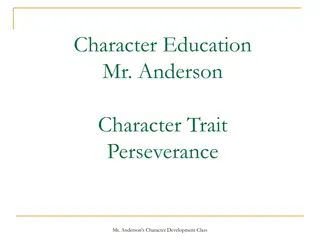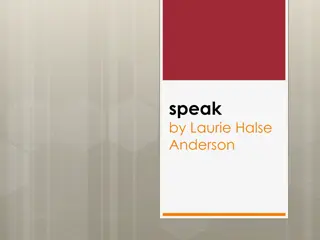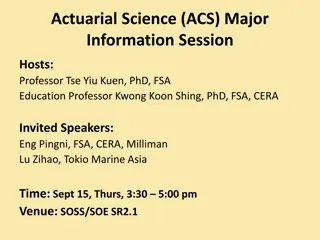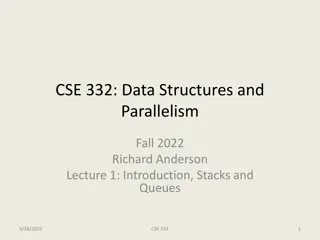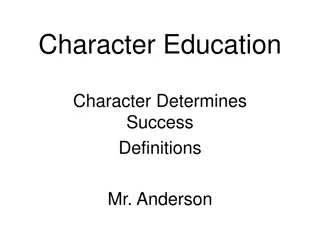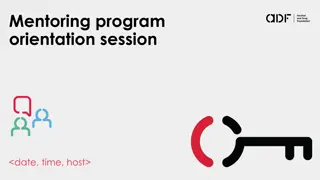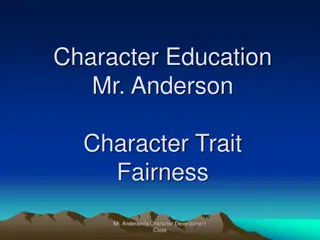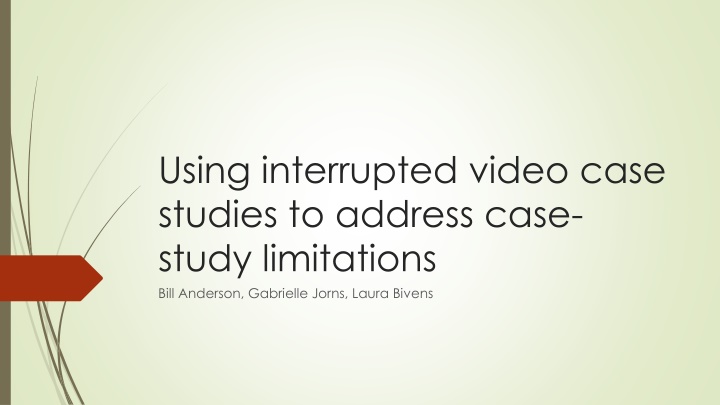
Addressing Limitations and Maintaining Strengths in Case-Based Instruction
Explore strategies to overcome limitations in case-based instruction while enhancing its strengths through the use of interrupted video case studies. Discover how progressive case studies and video technology integration can enrich the learning experience.
Uploaded on | 2 Views
Download Presentation

Please find below an Image/Link to download the presentation.
The content on the website is provided AS IS for your information and personal use only. It may not be sold, licensed, or shared on other websites without obtaining consent from the author. If you encounter any issues during the download, it is possible that the publisher has removed the file from their server.
You are allowed to download the files provided on this website for personal or commercial use, subject to the condition that they are used lawfully. All files are the property of their respective owners.
The content on the website is provided AS IS for your information and personal use only. It may not be sold, licensed, or shared on other websites without obtaining consent from the author.
E N D
Presentation Transcript
Using interrupted video case studies to address case- study limitations Bill Anderson, Gabrielle Jorns, Laura Bivens
FCS 408 - Human Development in Social Context Catalog description --- Theories and research regarding human development and family dynamics and their relationship to historical time, society, and culture. Primarily for Child Life students Typical class Reading exam Lecture Scenarios and case studies 5-minute teachings A two-hat technique (Herreid, 2004, 2007) How can I incorporate more case-based application with a two-hat methodology?
Case Based Instruction (CBI) CBI can be a representation of the messy world of practice However there are limitations Potentially a passive activity(developed from Egleston, 2013) Often what is being assessed is the ability to locate predetermined answers Some currently available case studies have responses readily available online Most cases are limited in length and may relate to only a few course concepts We may teach in blacks and white but most practice comes in shades of gray (Herron et al, 1990)
Case Based Instruction (CBI) Strengths of CBI (Developed from Herreid (2007), John (2002), Mayo (2002)) Actually tells a story and creates empathy for the characters Create the need to know Teach in context (i.e. applying, analyzing) Raise the level of critical thinking required Connecting theory to practice "A good case has ambiguities and it requires space to give a richness of texture to a story. The audience never knows how it will all come out..." (Herreid, 2007b, p. 48).
How can I address the limitations and maintain the strengths? Egleston s (2013) idea that a progressive case- study could address all limitations typically associated with CBI Mayo (2004), in reflecting on these difficulties, stated, "a promising direction for CBI might involve the combination of video technology and case method of teaching" (p. 144). The current study does exactly that.
The assignment Students will, at eight points in the semester, view individuals in a longitudinal case study. At each point, students will Identify Assume Distinguish Infer Prioritize Elaborate Imagine Predict (a) briefly describe where their subjects are in their lives and why, (b) review the accuracy of recent conclusions or predictions and respond, and ( c) make knowledgeable, theoretically informed predictions of who/where their subject(s) will be in seven years. Specifically identify theories used and why they were chosen. 1-2 pages per entry will be sufficient, due before the next class.
Why did you choose Neil? What did you learn about applying developmental theory? Neil How did the way you approached the subject and/or the assignment change over time? When and what did you begin to feel about the application of theory? How was this assignment different from previous studies with theory?
Nicholas Why did I choose Nick? What did you discover about Erikson, Marcia, ? Did you question yourself or __________ when writing essays? Changing my approach over time When and what did you begin to feel about Nick? How was this assignment different from previous studies with theory? From Family Science theories covered in FCS401? Learning from watching other participants
Findings Method Pre-/Post-Test Results Pre-/post-test scores were analyzed using a paired- samples t-test. The effect was significant, t(20) = -7. 990, p = .000. For all participants the posttest score was higher, moving from a mean pretest score of 17.65/39 (SD 3.26), or 45% to a posttest mean of 33.11 (SD 3.05), or 85%. This indicated a mean student improvement of roughly 40% (SD 2.72) Coding student essays for Pattern-Matching (Yin, 2009)
Coding student essays revealed Essay 2 - 14-Up Essay 8 - 56-Up Creating Evaluating Analyzing Applying Understanding 7.3% 8.1 % 17.7% 11.2% 19.1 % 11.6 % 16.7 % 35.1 % 6.3% 9.1% Remembering 36.6 % 28.9 %
The interrupted video case study format was successful Creating the need to know/Creating empathy I love the fact that Nicolas (at 21) said he does not worry about not achieving and he just wants to see where he ends up I m excited to see where Nicolas goes next. Suzi (at 21)is lost! However she could be a dark horse and surprise me. I cannot wait to find out was I thinking theory or not seeing past what I was hoping for Neil (at 42). I m not sure I know what to make of this. Neil (at 42) says that people thought he was a success and that when people wrote him they said that they could see something in him that Neil couldn t see in himself. I too see what they see in him.
The interrupted video case study format was successful Raise the level of critical thinking I may be assuming his experience is reflective of mine but I think that the distant relationship Neil has with his family might be for a reason that we have yet to see in his interviews. The Neil in 42-UP seemed less poetic I got the impression that he might be using a drug therapy to manage his illness. I also didn t see the sparkle of the 7-year old eyes felt like meeting a whole new person in a way. I hope he remains in good health, but I am worried. I don t think that Suzy will be fully into the next psychosocial stage by 56, because the questions and answers included were directed at a reflection of the past and very little was discussed of the future. So, naturally she appeared focused on her past. I would like to predict that his (Neil at 42) life becomes a little more stable, but I m not sure if that is a true prediction or just a hope.
The interrupted video case study format was successful Connect theory to practice Suzy (at 28) exceeded all my expectations because she was a wife and a mother. Perry stated that commitment in relativism is recognizing choices, accepting responsibility for their consequences, and willingness to accept others' right to their own choices. She may continue to reaffirm or reject old beliefs; either way, the decision is based on a conscious consideration of alternatives as opposed to the blind acceptance of the dualist. Nicolas also demonstrated a form of thinking between relativism and commitment however it depends on the person s developmental niche and personality. Nicolas was able to prioritize the options he had Neil (at 56) said that he was absolutely sure that his faith helped him through difficult times. Neil has found a Bible group along with doing his work as a politician and working in the church again shows signs of, I believe, generativity. But then we have been describing Neil this way since he was 28 haven t we?
Next Utilize 21-Up South Africa PPCT elements of Bioecological Theory Questions?
Work on this project was supported by a 2016 SoTL Small Grant from the Office of the Cross ENDOWED Chair in SoTL at ISU.





